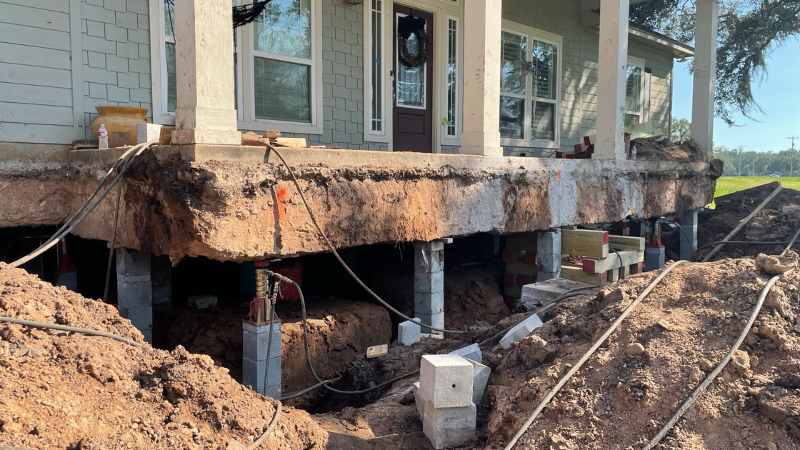House lifting may not be the most popular home renovation project. However, jacking up a home is a fairly common endeavor for many Houston homeowners. While there are different reasons why a homeowner may decide to lift his house, most Houstonians choose to raise their homes in order to repair a failing foundation or protect their habitable areas from flooding.
Regardless of the main purpose of a house lifting project, it’s recommended that the living space of any Houston home be raised above theBase Flood Elevation (BFE) specified for the area. This is the only way to ensure that a home located in a flood-prone area is protected from future floods.
Things We Consider before Lifting a Home
Elevating a home is a complex undertaking that often requires a lot of planning in order to prevent problems from occurring during the process. To ensure that everything goes as smoothly as possible, our experts consider the following:
- House size – A larger home means a heavier structure, which is usually more difficult to lift compared to a smaller home. Because elevating a larger home safely requires more work, equipment, and manpower, the lifting process is usually longer and costlier.
- Home Design – Homes with uncommon floor designs that are different from standard layouts can also affect the way the home will be lifted as well as the additional tasks that will need to be performed. Additional structures, such as garages, patios, decks, and sheds, might also need to be removed and added back once the home is lifted to the desired level.
- Existing damage – Our professionals will take into account every single factor that may affect your foundation’s stability and the structural integrity of your home. If your home was damaged by a flood in the past, repairs might be required before it can be lifted. For instance, alarge crack in the foundation may degrade a home’s structural integrity during the elevation process. In that case, the crack should be fixed before the structure can be raised.
In order to assess the overall condition of your home and determine if any repairs or accommodations need to be made before elevating it, we’ll inspect your entire house, including the foundation. Additionally, it’s important to know that specific issues, such as cracks in the siding or interior plaster, or small structural imperfections that can be easily fixed by a general contractor, could occur as a repercussion of the lift.
How It’s Done
The tasks that a house lifting contractor needs to perform in order to elevate your home depend on thetype of foundation you have. If you have a slab-on-grade foundation, the workers must first dig tunnels that will allow them to access the area underneath the slab. This process is commonly referred to as under-slab tunneling. Typically, contractors excavate one tunnel at a time, inserting beams and positioning hydraulic jacks inside each tunnel they dig, according to specifications. In case you have a pier and beam foundation, the contractor will use the crawlspace to access the area under your home. The lifters will place all the hydraulic jacks required directly under the beams.
Once in place, the jacks are hooked up to a unified hydraulic jacking machine, which will raise all the jacks simultaneously at the same rate. This will keep the entire home on a level plane during the lifting process. After the home is elevated a few inches, the lifters will check the entire structure to ensure it is safe to continue lifting the home. Each time the jacks are raised a few inches, cribbing—which is a strong interlocking system made of timber—is used to support the home. The home will be lifted a little bit higher than the level desired.
In the case of a beam and pier foundation, the contractor will extend the existing piers up to the level specified. If the foundation needs extra support, the contractor will install additional concrete piers in order to ensure the entire structure is supported adequately. If there is a slab-on-grade foundation, the contractor will build a new concrete subfloor from scratch and install all the piers required. Once these tasks are completed, your home will be lowered to its final height using the samehydraulic jacks.
Usually, home lifting is a slow, methodical process, which involves raising the structure just a few inches at a time. However, if your home has a pier and beam foundation that’s in good condition, the lifting can be done in as little as one day.
Although lifting a house isn’t a very difficult undertaking, finding an experienced house lifting contractor is key to the whole process. Besides ensuring that the job is done safely, areputable contractor specializing in home elevations and foundation repairs also means less hassle. Don’t hesitate to contact our team at Allied Foundation with any questions you might have about the home elevation process!

